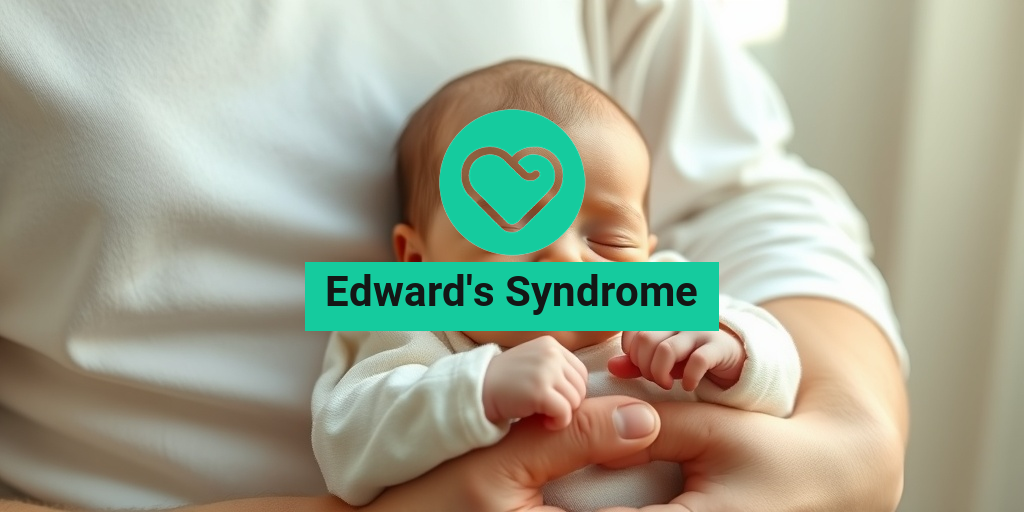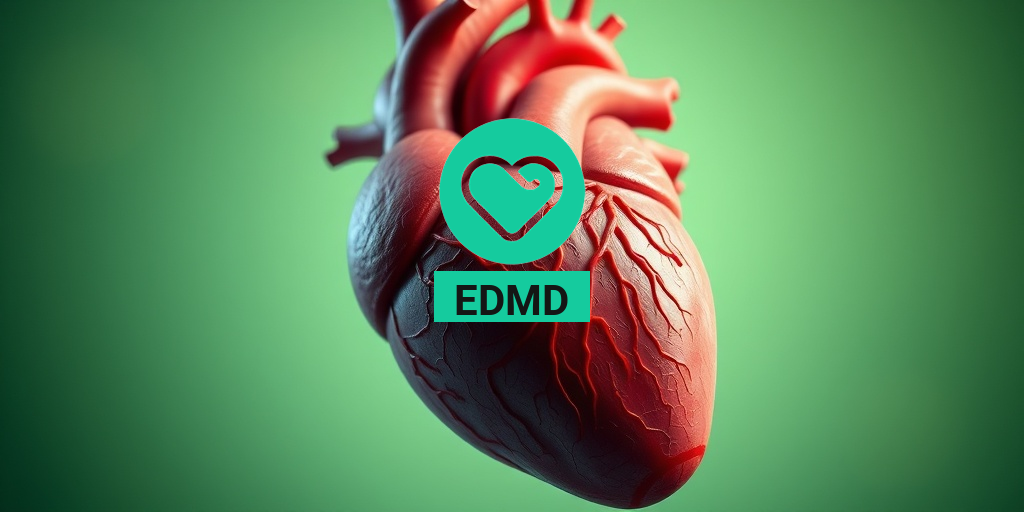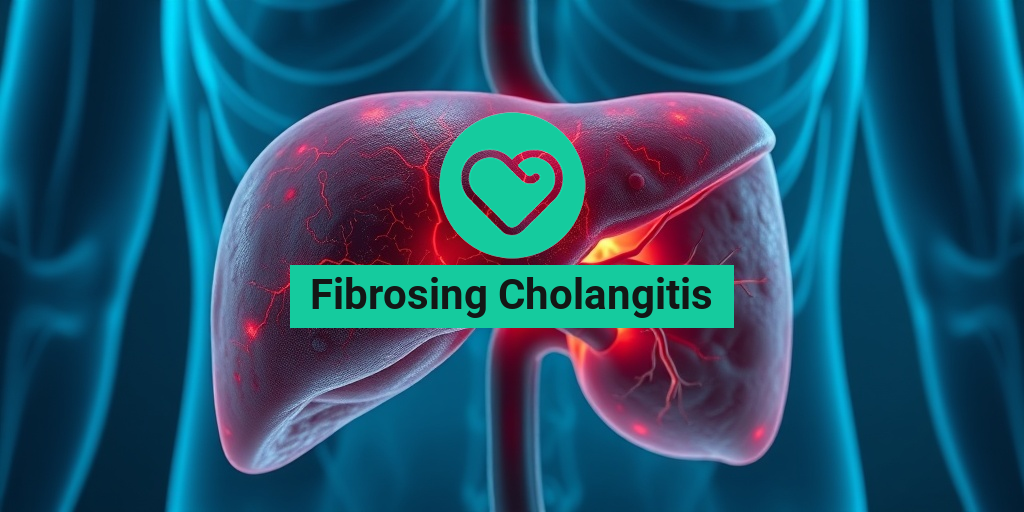What Is Edward’s Syndrome?
Edward’s Syndrome, also known as Trisomy 18, is a serious genetic disorder caused by the presence of an extra 18th chromosome. This condition is named after Dr. John Edward, who first described it in 1960. It is one of the most common chromosomal abnormalities, occurring in approximately 1 in every 5,000 live births. However, many pregnancies affected by Edward’s Syndrome end in miscarriage or stillbirth.
The extra chromosome disrupts normal development, leading to a range of physical and intellectual disabilities. While the condition can affect anyone, it is more prevalent in females than males, with a ratio of about 3:1. Understanding Edward’s Syndrome is crucial for parents and caregivers, as it can significantly impact the lives of those affected.
Causes of Edward’s Syndrome
Edward’s Syndrome is primarily caused by a random error in cell division known as nondisjunction. During this process, chromosomes fail to separate properly, resulting in an embryo with three copies of chromosome 18 instead of the usual two. The exact reason why this occurs is not well understood, but several factors may increase the risk:
- Maternal Age: Women over the age of 35 are at a higher risk of having a child with chromosomal abnormalities.
- Genetic Factors: A family history of chromosomal disorders may also play a role.
Edward’s Syndrome Symptoms
The symptoms of Edward’s Syndrome can vary widely among individuals, but they typically include a combination of physical and developmental challenges. Here are some of the most common symptoms:
Physical Symptoms
- Low Birth Weight: Babies with Edward’s Syndrome often have a lower birth weight than average.
- Distinctive Facial Features: These may include a small head, a prominent back of the head, and a small jaw.
- Clenched Fists: Many infants exhibit clenched hands with overlapping fingers.
- Heart Defects: Congenital heart defects are common, affecting nearly 90% of those with the syndrome.
- Kidney Problems: Abnormalities in kidney structure and function can also occur.
Developmental Symptoms
In addition to physical symptoms, children with Edward’s Syndrome may experience significant developmental delays. These can include:
- Delayed Milestones: Children may take longer to reach developmental milestones such as sitting, crawling, or walking.
- Intellectual Disabilities: Most individuals with Edward’s Syndrome will have some level of intellectual disability.
- Feeding Difficulties: Many infants struggle with feeding, which can lead to further health complications.
Life Expectancy
The life expectancy for individuals with Edward’s Syndrome varies significantly. While some may live only a few days or weeks, others can survive into their teens or even adulthood, although this is rare. Advances in medical care have improved the quality of life for some, but many face serious health challenges throughout their lives.
For parents and caregivers, understanding the implications of Edward’s Syndrome is essential. Support from healthcare professionals, genetic counselors, and organizations dedicated to helping families affected by this condition can provide valuable resources and guidance.
If you are seeking more information about Edward’s Syndrome or related health topics, consider visiting Yesil Health AI for evidence-based answers and support. 🌟

Causes of Edward’s Syndrome
Edward’s Syndrome, also known as Trisomy 18, is a genetic disorder caused by the presence of an extra copy of chromosome 18. This chromosomal abnormality leads to a range of developmental and physical challenges. Understanding the causes of Edward’s Syndrome is crucial for parents and healthcare providers alike.
Chromosomal Abnormalities
The primary cause of Edward’s Syndrome is a genetic error during cell division, known as nondisjunction. This occurs when chromosomes fail to separate properly during the formation of eggs or sperm. As a result, a fertilized egg may end up with three copies of chromosome 18 instead of the usual two. This extra genetic material disrupts normal development, leading to the symptoms associated with the syndrome.
Types of Edward’s Syndrome
There are three main types of Edward’s Syndrome, each varying in severity:
- Full Trisomy 18: This is the most common form, where every cell in the body has an extra chromosome 18.
- Partial Trisomy 18: In this case, only some cells have the extra chromosome, which can lead to a milder presentation of symptoms.
- Mosaic Trisomy 18: This rare form occurs when some cells have the extra chromosome while others do not, potentially resulting in a less severe phenotype.
Genetic Factors
While Edward’s Syndrome is primarily caused by random genetic errors, certain genetic factors may increase the likelihood of nondisjunction. For instance, advanced maternal age is a significant risk factor, as the chances of chromosomal abnormalities increase with age. Women over the age of 35 are at a higher risk of having a child with Edward’s Syndrome.
Risk Factors for Edward’s Syndrome
Identifying the risk factors associated with Edward’s Syndrome can help in understanding its occurrence and guiding prenatal care. While some factors are beyond control, awareness can lead to better preparation and management.
Maternal Age
As mentioned earlier, maternal age plays a crucial role in the risk of chromosomal abnormalities. Women aged 35 and older are more likely to conceive a child with Edward’s Syndrome. This is due to the aging of eggs, which may be more prone to errors during cell division.
Family History
Although most cases of Edward’s Syndrome occur sporadically, a family history of chromosomal abnormalities can increase the risk. If a parent has had a child with a chromosomal disorder, the likelihood of recurrence may be higher. Genetic counseling can provide valuable insights for families with such histories.
Previous Pregnancy Complications
Women who have experienced complications in previous pregnancies, such as miscarriages or stillbirths, may have an increased risk of having a child with Edward’s Syndrome. These complications can sometimes indicate underlying genetic issues that could affect future pregnancies.
Environmental Factors
While the exact environmental factors contributing to Edward’s Syndrome are not well understood, some studies suggest that exposure to certain substances during pregnancy, such as drugs, alcohol, or environmental toxins, may play a role. Maintaining a healthy lifestyle and avoiding harmful substances can help reduce risks.
Ultrasound Findings
During routine prenatal care, ultrasounds can sometimes reveal markers associated with Edward’s Syndrome. These may include:
- Abnormalities in fetal growth
- Heart defects
- Structural anomalies
While these findings do not confirm a diagnosis, they can prompt further testing, such as amniocentesis or chorionic villus sampling (CVS), to assess the chromosomal makeup of the fetus.
In conclusion, understanding the causes and risk factors associated with Edward’s Syndrome is essential for expectant parents and healthcare providers. Early detection and intervention can significantly impact the management of this condition, leading to better outcomes for affected individuals. 🌟

Diagnosis of Edward’s Syndrome
Edward’s Syndrome, also known as Trisomy 18, is a serious genetic condition caused by the presence of an extra 18th chromosome. Diagnosing this syndrome can be complex, as it often requires a combination of clinical evaluation and genetic testing. Understanding the diagnostic process is crucial for parents and caregivers.
Initial Screening and Symptoms
The first step in diagnosing Edward’s Syndrome typically involves a thorough physical examination and a review of the infant’s medical history. Some common Edward’s Syndrome symptoms that may be observed include:
- Low birth weight
- Abnormal head shape
- Clenched fists with overlapping fingers
- Heart defects
- Kidney problems
- Growth delays
Parents may notice these symptoms during pregnancy or shortly after birth. If any of these signs are present, further testing is usually recommended.
Ultrasound and Genetic Testing
During pregnancy, an Edward’s Syndrome ultrasound can help identify potential markers of the condition. This imaging technique may reveal physical abnormalities that suggest the presence of the syndrome. If abnormalities are detected, healthcare providers may recommend additional testing, such as:
- Amniocentesis: A procedure where amniotic fluid is sampled to analyze the baby’s chromosomes.
- Chorionic Villus Sampling (CVS): A test that involves taking a sample of placental tissue to check for chromosomal abnormalities.
These tests can confirm the diagnosis by identifying the extra chromosome associated with Edward’s Syndrome. It’s important to discuss the risks and benefits of these procedures with a healthcare provider.
Postnatal Diagnosis
If Edward’s Syndrome is not diagnosed during pregnancy, it may be identified after birth. Pediatricians may perform a physical examination and order genetic testing if they suspect the condition. A karyotype analysis can confirm the diagnosis by showing the presence of the extra chromosome.
Edward’s Syndrome Treatment Options
While there is currently no cure for Edward’s Syndrome, various treatment options can help manage symptoms and improve the quality of life for affected individuals. The treatment plan is often tailored to the specific needs of the patient and may involve a multidisciplinary approach.
Medical Management
Medical management focuses on addressing the various health issues associated with Edward’s Syndrome. This may include:
- Cardiac Care: Many infants with Edward’s Syndrome have congenital heart defects that may require surgical intervention or ongoing monitoring.
- Nutritional Support: Due to feeding difficulties, some children may need specialized feeding techniques or nutritional supplements.
- Physical Therapy: Early intervention programs can help improve motor skills and overall development.
Supportive Care
Supportive care is essential for enhancing the quality of life for individuals with Edward’s Syndrome. This may involve:
- Palliative Care: For those with severe symptoms, palliative care focuses on providing comfort and support rather than curative treatment.
- Family Support: Counseling and support groups can help families cope with the emotional challenges of raising a child with a complex condition.
Long-Term Outlook
The life expectancy for individuals with Edward’s Syndrome varies significantly. While many infants do not survive past their first year, some individuals can live into their teens or beyond with appropriate medical care. Ongoing research and advancements in treatment options continue to improve outcomes for those affected by this condition.
In conclusion, early diagnosis and a comprehensive treatment plan can make a significant difference in the lives of individuals with Edward’s Syndrome. By understanding the diagnostic process and available treatment options, families can better navigate the challenges associated with this condition. 🌈

Living with Edward’s Syndrome
Edward’s Syndrome, also known as Trisomy 18, is a serious genetic condition caused by the presence of an extra 18th chromosome. This chromosomal abnormality can lead to a range of physical and developmental challenges. Understanding what it means to live with Edward’s Syndrome is crucial for families and caregivers, as it can significantly impact daily life.
Understanding Edward’s Syndrome
Individuals with Edward’s Syndrome often face a variety of health issues, including:
- Heart defects: Many children with this condition are born with congenital heart defects, which can complicate their health and require surgical intervention.
- Growth delays: Children may experience significant growth delays, both in terms of physical stature and developmental milestones.
- Neurological issues: Cognitive impairments and developmental delays are common, affecting learning and social interactions.
- Feeding difficulties: Many infants struggle with feeding, which can lead to malnutrition and further health complications.
Despite these challenges, it’s important to recognize that each individual with Edward’s Syndrome is unique. Some may have more severe symptoms, while others may experience milder effects. The life expectancy for those with Edward’s Syndrome varies, with many not surviving past their first year, but some individuals do live into their teens or beyond with appropriate care.
Daily Life and Care
Living with Edward’s Syndrome requires a comprehensive care plan tailored to the individual’s needs. This often includes:
- Regular medical check-ups: Frequent visits to specialists, including pediatricians, cardiologists, and neurologists, are essential for monitoring health and development.
- Therapies: Physical, occupational, and speech therapies can help improve motor skills and communication abilities.
- Supportive care: Families may need to provide additional support for daily activities, including feeding, bathing, and mobility assistance.
Emotional support is equally important. Families often find themselves navigating a complex emotional landscape, balancing hope with the realities of the condition. Connecting with support groups can provide a sense of community and understanding, helping families share experiences and coping strategies.
Support and Resources for Families
Families facing the challenges of Edward’s Syndrome can benefit from a variety of resources and support systems. Here are some valuable options:
Support Groups and Organizations
Connecting with others who understand the journey can be incredibly beneficial. Organizations such as:
- The Trisomy 18 Foundation: This organization provides resources, support, and advocacy for families affected by Trisomy 18.
- National Down Syndrome Society: While focused on Down syndrome, they offer resources that can be helpful for families dealing with chromosomal abnormalities.
- Local support groups: Many communities have local support groups where families can meet, share experiences, and provide mutual support.
Educational Resources
Understanding Edward’s Syndrome is crucial for effective management. Families can access a wealth of information through:
- Medical professionals: Regular consultations with healthcare providers can help families stay informed about the latest research and treatment options.
- Online resources: Websites like Trisomy 18 Foundation and NCBI offer valuable information on symptoms, treatment, and living with the condition.
Financial Assistance
The financial burden of caring for a child with Edward’s Syndrome can be overwhelming. Families may explore options such as:
- Government assistance programs: Programs like Medicaid and Social Security can provide financial support for medical expenses.
- Non-profit organizations: Some organizations offer grants or financial assistance to families in need.
Living with Edward’s Syndrome presents unique challenges, but with the right support and resources, families can navigate this journey with resilience and hope. Remember, you are not alone in this experience. 💖

Frequently Asked Questions about Edward’s Syndrome
What is Edward’s Syndrome?
Edward’s Syndrome, also known as Trisomy 18, is a genetic disorder caused by the presence of an extra 18th chromosome. This condition leads to severe developmental delays and various health complications.
What are the common symptoms of Edward’s Syndrome?
Individuals with Edward’s Syndrome may exhibit a range of symptoms, including:
- Low birth weight
- Severe intellectual disability
- Heart defects
- Clenched fists with overlapping fingers
- Facial abnormalities
- Kidney problems
What is the life expectancy for someone with Edward’s Syndrome?
The life expectancy for individuals with Edward’s Syndrome is generally low. Many infants do not survive past their first year, but some may live longer with appropriate medical care. The prognosis varies significantly based on the severity of the symptoms and associated health issues.
How is Edward’s Syndrome diagnosed?
Edward’s Syndrome can be diagnosed through various methods, including:
- Ultrasound during pregnancy
- Chorionic villus sampling (CVS)
- Amniocentesis
- Postnatal karyotyping
Ultrasound may reveal physical abnormalities, while karyotyping can confirm the presence of an extra chromosome.
What causes Edward’s Syndrome?
Edward’s Syndrome is primarily caused by nondisjunction, which is the failure of chromosomes to separate properly during cell division. This results in an embryo with three copies of chromosome 18 instead of the usual two.
Can adults have Edward’s Syndrome?
While Edward’s Syndrome is typically diagnosed in infancy, there are rare cases of adults living with the condition. These individuals often have significant health challenges and developmental delays.
What does the karyotype look like for Edward’s Syndrome?
The karyotype for Edward’s Syndrome shows three copies of chromosome 18, which is represented as 47,XX,+18 for females and 47,XY,+18 for males. This chromosomal abnormality is the hallmark of the syndrome.
Are there any support resources for families affected by Edward’s Syndrome?
Yes, there are various organizations and online communities that provide resources and support for families affected by Edward’s Syndrome. These resources can help families connect with others, access information, and find emotional support.
Where can I find more information about Edward’s Syndrome?
For more detailed information about Edward’s Syndrome, consider visiting reputable health websites, genetic counseling centers, or organizations dedicated to genetic disorders. These resources can provide valuable insights and support for affected individuals and their families.




